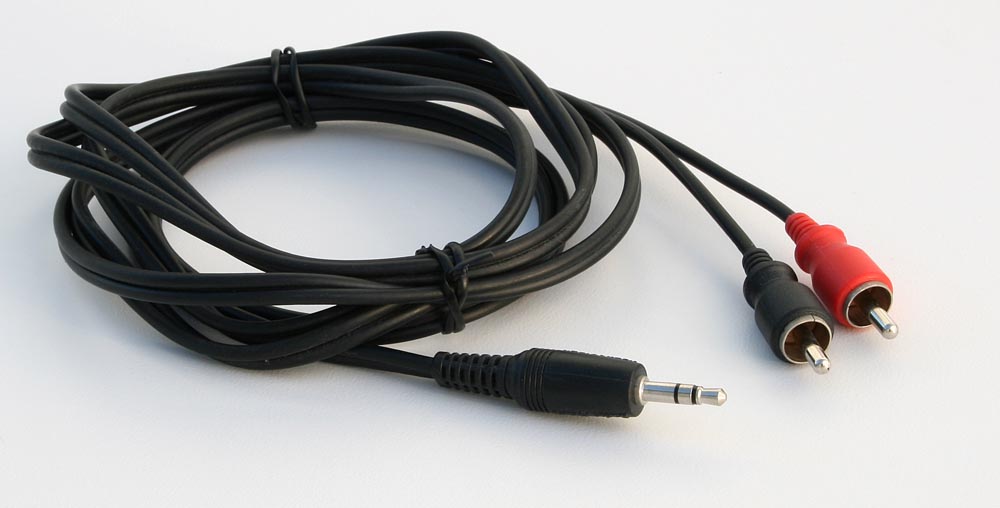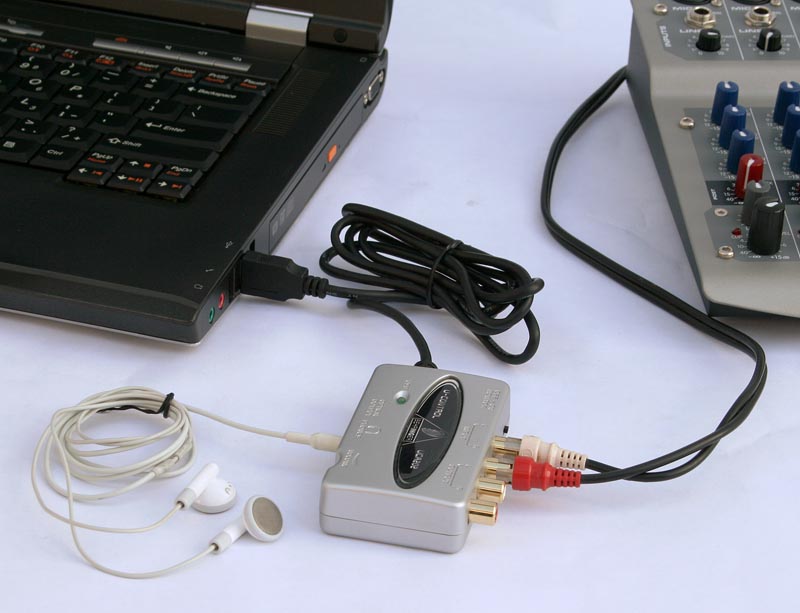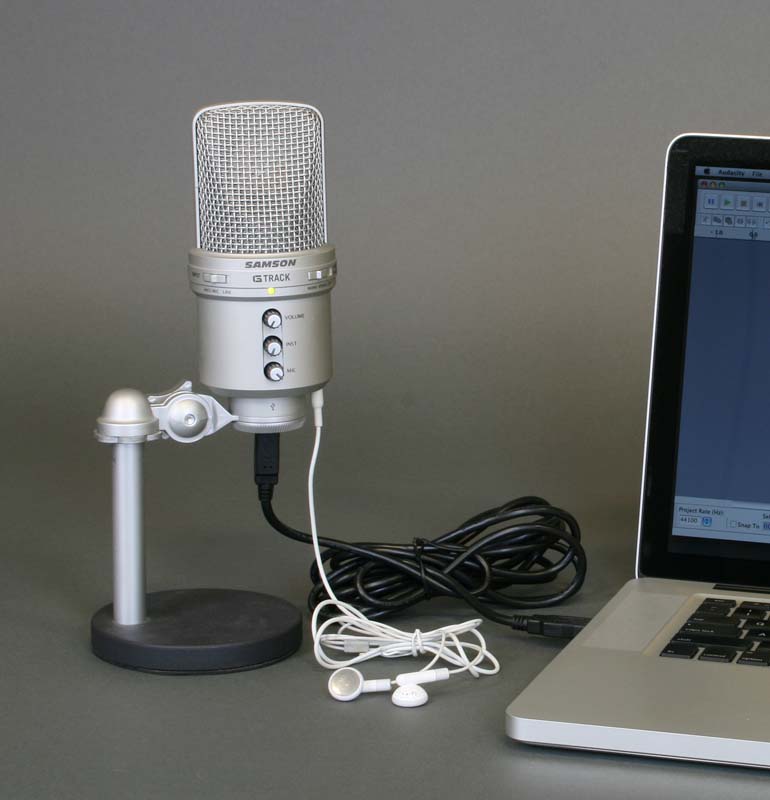I have a basic question: what is the difference between a Mixer and a Audio Digital Interface?
A digital Audio Interface just gets you back and forth between analog audio and computer digital bitstreams. You can’t hear a bitstream and a computer has no idea how a microphone works. You need to put something in the middle.
This is a very simple Digital Audio Interface, our favorite UCA-202.

That’s stereo audio on one side (the mixer or the cassette machine) and a simple computer on the other. Note there’s no microphones anywhere. In the case of the mixer, you plug the microphones into the mixer, the mixer amplifies the voices so the Digital Audio Interface can deal with them.
In the case of many Macs, there’s a terrific Stereo Digital Audio Interface build in. It’s the circle with two black arrows.
So in that case, all you need is a mixer, microphones, an audio cable…

and Mac and you’re good to go. That’s exactly what’s going on here…

There are many variations. You can get a Peavey PV6 with a Digital Audio Interface built in. That’s the PV6-USB.
http://www.sweetwater.com/store/search.php?s=pv6
That connects to the computer with a digital USB cable instead of an analog audio cable and it will connect to a computer with no soundcard at all. Almost any computer. Doesn’t have to be a Mac with the fancy audio connections.
You don’t need the mixer at all. You can get a USB microphone and that converts directly from sound to digital.
Everything is built in, plug directly into the computer. However, you are warned that while that sounds terrific, in actual use you can run into problems because it’s very difficult to set sound levels and you can’t apply mixer filters, faders, etc. etc. Many shortcuts were taken to get these things to work. You only get one microphone. If you need two or more independent microphones, have a happy day. You can’t do that.
For field interviews, you may not need any of that. A portable capture device such as the Zoom series or the Marantz devices may be called for. I believe NPR uses the Marantz units for their interviews.
http://www.sweetwater.com/store/manufacturer/Zoom
http://www.sweetwater.com/store/manufacturer/Marantz
For “studio” interviews, then yes, by all means a nice mixer (I use the Peaveys at home and work, so I know how they operate. Others work, too.) Pick the number of microphones that you couldn’t possibly use in a million years. Mixers come 4, 6, 8, and up. Then, the next week after you bought it, you’ll run out.
The worst problem doing field interviews is getting a voice to work in challenging conditions. Try to do an interview in a small, busy airport or a construction site. At home, your worst problem is you don’t have a studio and you can’t do them in your echoey, reverberant kitchen.
I have a really good bad example of this that I didn’t post yet. Rain check.
Koz





